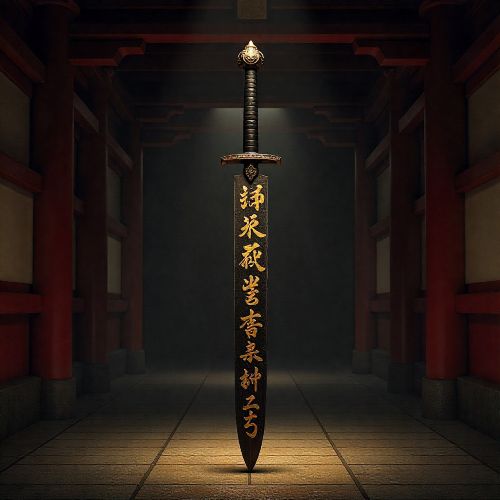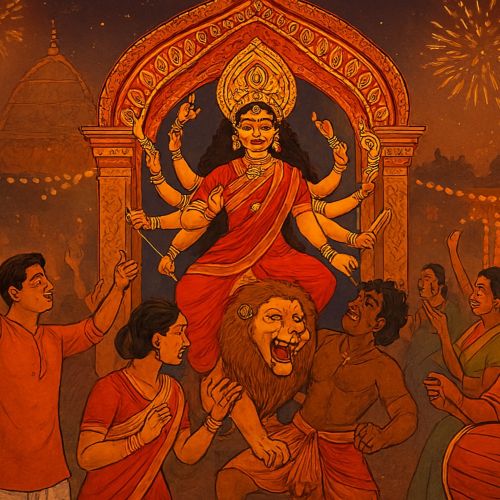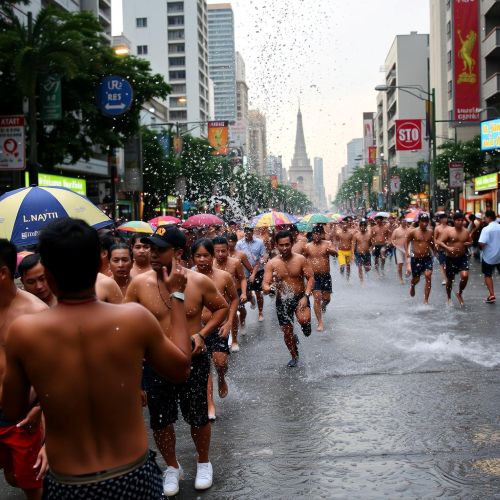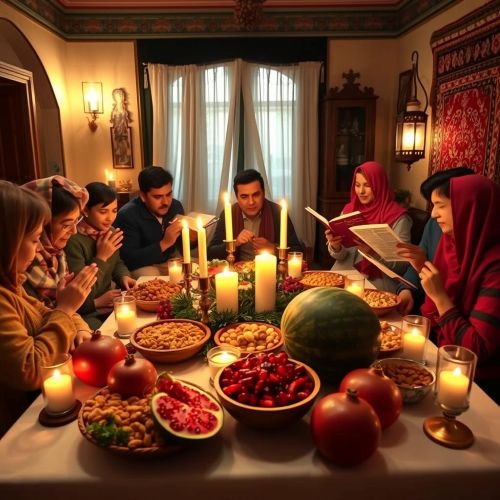Maha Shivaratri : Night of Transformation
At a glance
| Description | |
|---|---|
| Location | All over |
| Country | India |
| Dedicated To | Shiva |
| Duration | 1 days |
| Time of Year | February – March |
Introduction
Maha Shivaratri, meaning “The Great Night of Shiva,” is one of the most revered festivals in Hinduism, celebrated with deep devotion and spiritual intensity. Observed annually on the 14th night of the waning moon in the Hindu month of Phalguna, which usually falls in February or March, it is a night dedicated entirely to Lord Shiva. Unlike other Hindu festivals marked by vibrant processions and feasts, Maha Shivaratri is a solemn occasion of fasting, meditation, and night-long vigils. It symbolizes the eternal struggle between light and darkness, knowledge and ignorance, and offers devotees an opportunity for profound inner transformation. For millions across India and the global Hindu diaspora, the festival is a reminder of Shiva’s role as both the destroyer of illusions and the guide toward liberation.
Connection with Mythology
Maha Shivaratri draws its significance from multiple legends in Hindu scriptures, each offering unique insight into Shiva’s cosmic role.
One of the most widely known stories describes Maha Shivaratri as the wedding day of Shiva and Parvati. Their divine marriage represents the fusion of Shiva, the embodiment of pure consciousness, and Parvati, the dynamic energy of creation. Together, they symbolize balance, harmony, and the interdependence of masculine and feminine forces in the universe.
Another account links the festival to the cosmic event of Samudra Manthan, the churning of the ocean of milk by gods and demons. When the deadly poison halahala emerged, threatening to destroy creation, Shiva drank it to save the universe. The poison remained in his throat, turning it blue and earning him the name Neelkantha. Maha Shivaratri honors this act of immense sacrifice and compassion.
The Linga Purana presents yet another perspective, narrating how Shiva appeared as an infinite pillar of light—the Lingodbhava—demonstrating his boundless and formless essence. Worship of the Shiva Linga on Maha Shivaratri is thus believed to connect devotees to the supreme reality beyond physical existence.
Some traditions also associate the night with Shiva’s cosmic dance, the Tandava, a performance that signifies creation, preservation, and destruction. Through this myth, the festival becomes a celebration of the cyclical nature of the universe itself. Together, these legends highlight Maha Shivaratri as more than a ritual—it is a night that embodies timeless truths about sacrifice, transformation, and divine balance.
Main Activities
The observance of Maha Shivaratri is marked by devotion, austerity, and spiritual practice rather than grand festivities.
Fasting, known as upavasa, is central to the day. Many devotees abstain from food entirely, while others take only fruits, milk, or water. The fast is believed to cleanse the body, control desires, and enhance spiritual focus. Breaking the fast only after completing prayers the following morning signifies renewal and discipline.
Staying awake through the night, called jagaran, is another key practice. Temples are filled with chants of “Om Namah Shivaya” as devotees engage in bhajans, meditation, and scripture recitations. The vigil symbolizes vigilance over the restless mind and the triumph of awareness over spiritual ignorance.
A unique feature of the night is the abhishekam, the ritual bathing of the Shiva Linga. Performed at intervals throughout the night, it involves offering milk, curd, honey, ghee, and water, each representing purification and devotion. Bel leaves, dhatura flowers, and sandalwood paste are also offered, carrying symbolic associations with the destruction of negativity and the cultivation of inner purity.
In addition to rituals, meditation plays a significant role. The night is considered an especially auspicious time for deep spiritual practices, as yogic traditions regard it as a moment when natural energies rise and inner focus becomes easier. Practitioners believe that aligning with this cosmic energy can lead to profound spiritual awakening.
Importance in Cultural History
Maha Shivaratri is not only a religious event but also a festival woven into India’s cultural and historical fabric.
Its roots can be traced back to Vedic and Puranic traditions, where the day was emphasized as a powerful moment for introspection and prayer. Over centuries, dynasties and rulers across India—including the Cholas and Marathas—patronized Maha Shivaratri, supporting grand temple rituals and cultural celebrations.
The festival has also played an important role in the arts. Dance traditions such as Bharatanatyam and Odissi frequently depict Shiva’s Tandava, and temple complexes like Chidambaram and Khajuraho host festivals such as Natyanjali, where dancers offer their art as a form of worship. These performances celebrate Shiva not only as a god but as the eternal dancer and source of cosmic rhythm.
In regional contexts, the celebration takes on diverse expressions. In Kashmir Shaivism, Maha Shivaratri, known as Herath, is observed with unique family rituals and extended festivities. In Tamil Nadu, devotees undertake the sacred Girivalam, walking barefoot around Arunachala Hill in Tiruvannamalai. In Himachal Pradesh, the Mandi Shivaratri fair brings together hundreds of deities from surrounding temples in a grand cultural gathering.
Through these regional variations, the festival reflects both the unity and diversity of India’s spiritual traditions, transcending caste, community, and geography.
Need a place to stay? Book your hotel room now!
International Appeal
In recent decades, Maha Shivaratri has grown into a global spiritual event, celebrated not only in India but across continents.
In Nepal, the festival is observed with great reverence at the Pashupatinath temple, where thousands of devotees and ascetics gather for night-long rituals. In Mauritius, Hindu communities undertake pilgrimages to Ganga Talao, a sacred crater lake, creating one of the largest religious gatherings outside India. Similar celebrations take place in Indonesia, Sri Lanka, Trinidad, and Fiji, where the Hindu diaspora has preserved its traditions with devotion.
The festival has also gained prominence in Western countries. Spiritual organizations such as the Isha Foundation host massive events that blend traditional rituals with modern meditation practices, drawing participants from diverse cultural backgrounds. Yoga communities worldwide see Maha Shivaratri as a night to honor Shiva as Adiyogi, the first yogi, making it a focal point for spiritual seekers.
Digital platforms have further expanded its reach. Temples and cultural centers livestream their celebrations, while online satsangs and chanting sessions allow global devotees to participate virtually. This digital transformation has ensured that Maha Shivaratri transcends physical boundaries, resonating with anyone drawn to themes of balance, renewal, and self-realization.
Beyond religious circles, scholars and cultural enthusiasts are increasingly exploring Maha Shivaratri as an example of ritual cosmology, drawing parallels with other global traditions that celebrate cycles of death, rebirth, and transformation.
Source
Britannica. (1998, July 19). Maha Shivaratri. https://www.britannica.com/topic/Maha-shivaratri
eCraftIndia. (2022, February 14). The story, the history and the importance of Maha Shivaratri. https://www.ecraftindia.com/blogs/articles/the-story-the-history-and-the-importance-of-maha-shivaratri
Original Buddhas. (1999, December 31). Maha Shivaratri – A great Hindu festival of Lord Shiva. https://www.originalbuddhas.com/blog/maha-shivaratri
Hindu American Foundation. (2025, February 24). 5 things to know about Maha Shivaratri. https://hinduamerican.org/blog/5-things-to-know-about-maha-shivaratri/
Wikipedia. (2004, October 17). Maha Shivaratri. https://en.wikipedia.org/wiki/Maha_Shivaratri
Sri Diya. (1999, December 31). Maha Shivaratri and its significance. https://sridiya.com/ta/blogs/maha-shivaratri-and-its-significance
Times of India. (2025, February 16). Why Maha Shivratri is celebrated? Know its significance. https://timesofindia.indiatimes.com/religion/festivals/why-maha-shivratri-is-celebrated-know-its-significance/articleshow/108108361.cms
Ketto. (2024, May 7). MahaShivratri: Significance, history, evolution & celebrations. https://www.ketto.org/blog/mahashivratri
Phool. (2025, July 1). What is the story behind Maha Shivaratri? https://phool.co/blogs/sacredstories/what-is-the-story-behind-maha-shivaratri
Pujayagna. (2020, December 9). Maha Shivratri – Significance of Mahashivratri, Legend. https://pujayagna.com/blogs/hindu-festivals/maha-shivratri
Frequently Asked Questions
Lorem ipsum dolor sit amet, consectetur adipiscing?
Lorem ipsum dolor sit amet, consectetur adipiscing elit. Praesent convallis vestibulum justo, ac tincidunt nunc vehicula quis. Nullam id dolor quis orci malesuada feugiat. Curabitur aliquet libero at urna ullamcorper, ac ultricies nulla dapibus.
Lorem ipsum dolor sit amet, consectetur adipiscing?
Lorem ipsum dolor sit amet, consectetur adipiscing elit. Praesent convallis vestibulum justo, ac tincidunt nunc vehicula quis. Nullam id dolor quis orci malesuada feugiat. Curabitur aliquet libero at urna ullamcorper, ac ultricies nulla dapibus.
Lorem ipsum dolor sit amet, consectetur adipiscing?
Lorem ipsum dolor sit amet, consectetur adipiscing elit. Praesent convallis vestibulum justo, ac tincidunt nunc vehicula quis. Nullam id dolor quis orci malesuada feugiat. Curabitur aliquet libero at urna ullamcorper, ac ultricies nulla dapibus.
Lorem ipsum dolor sit amet, consectetur adipiscing?
Lorem ipsum dolor sit amet, consectetur adipiscing elit. Praesent convallis vestibulum justo, ac tincidunt nunc vehicula quis. Nullam id dolor quis orci malesuada feugiat. Curabitur aliquet libero at urna ullamcorper, ac ultricies nulla dapibus.
Lorem ipsum dolor sit amet, consectetur adipiscing?
Lorem ipsum dolor sit amet, consectetur adipiscing elit. Praesent convallis vestibulum justo, ac tincidunt nunc vehicula quis. Nullam id dolor quis orci malesuada feugiat. Curabitur aliquet libero at urna ullamcorper, ac ultricies nulla dapibus.









